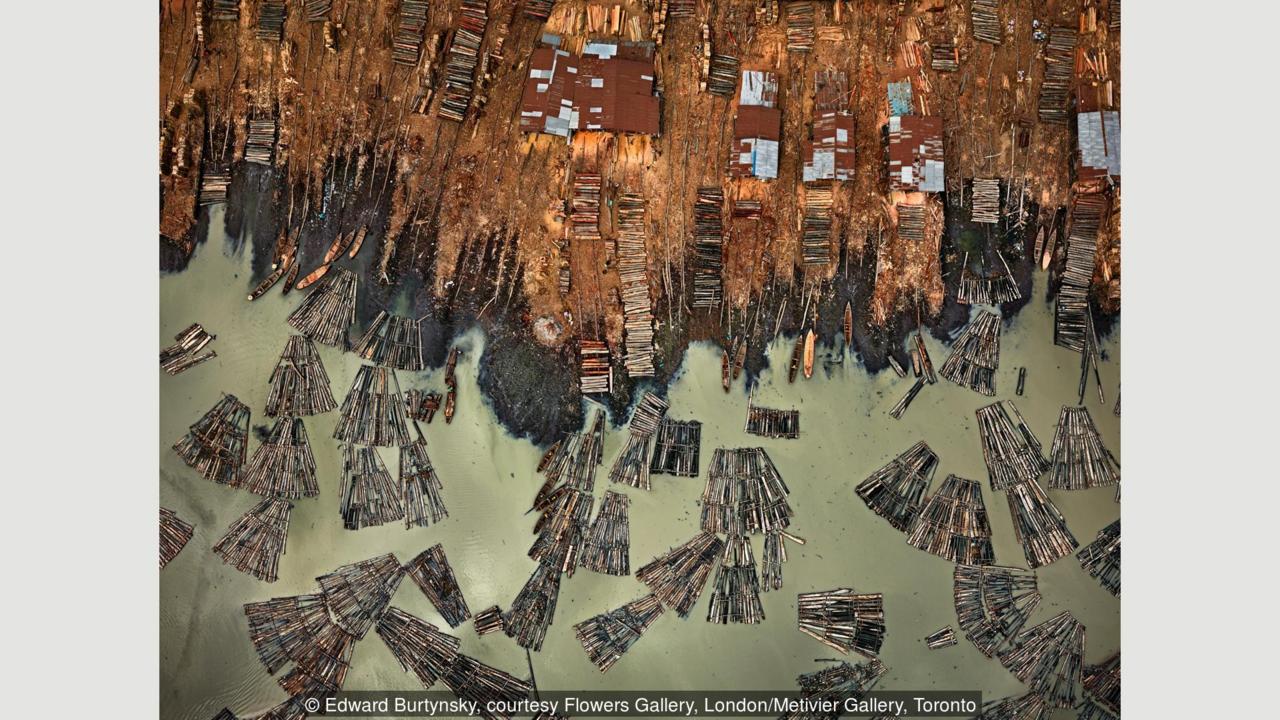 **Edward Burtynsky’s images show ‘the indelible marks left by humankind on the geological face of our planet’. They are surreal and glorious at first sight, writes Cameron Laux.**
**Edward Burtynsky’s images show ‘the indelible marks left by humankind on the geological face of our planet’. They are surreal and glorious at first sight, writes Cameron Laux.**
The Canadian photographer Edward Burtynsky is a master of the post-industrial sublime. His sweeping point of view is, at the very least, ambivalent. His shots, most recently taken from the coolest possible standpoint of a helicopter and sometimes a satellite, are at first sight surreal and glorious, but they have an ominous documentary undertow.

Saw Mills #1, Lagos, Nigeria, 2016 (Credit: Edward Burtynsky, courtesy Flowers Gallery, London/Metivier Gallery, Toronto)
His large-format photos aestheticise mining, deforestation, industrial waste and decay, monumental piles of garbage, plastic, rubber; expanses of new and decommissioned equipment so vast that they look like crystalline formations; dense human settlements which from an Olympian standpoint look like creeping mould or infestations.
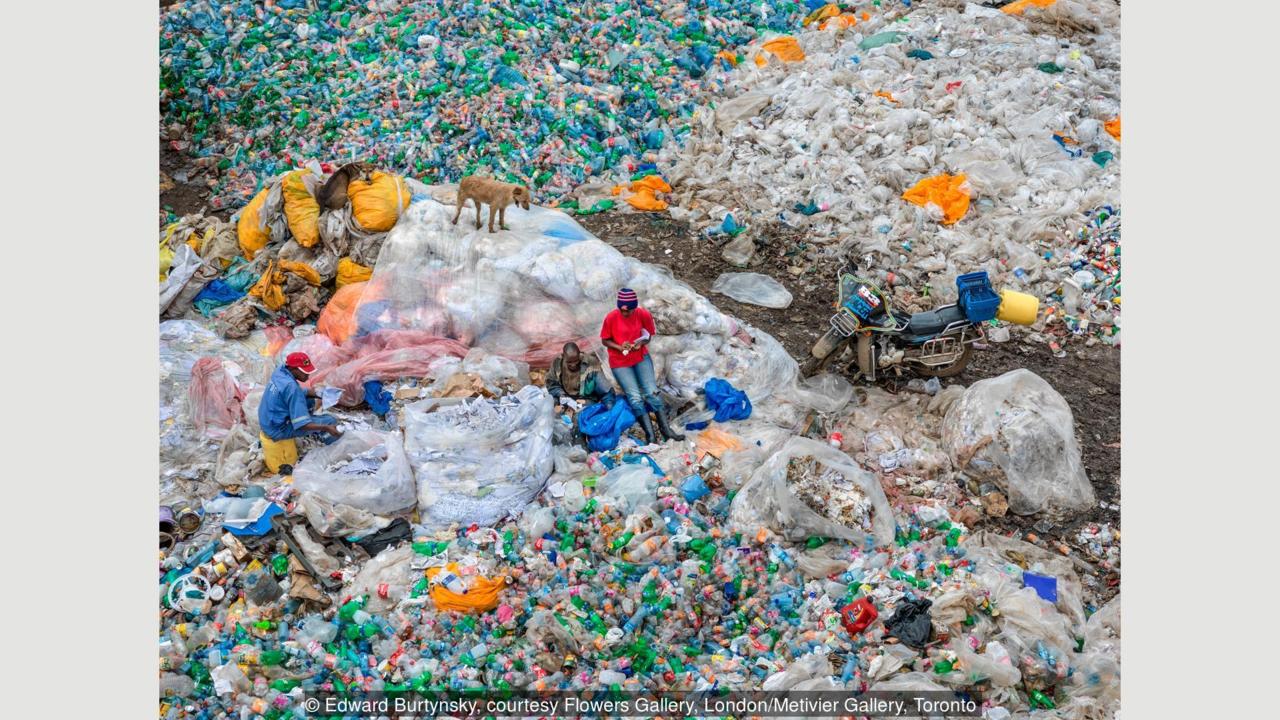
Dandora Landfill #3, Plastics Recycling, Nairobi, Kenya, 2016: among the world's largest (Credit: Edward Burtynsky, courtesy Flowers Gallery, London/Metivier Gallery, Toronto)
“Most people would walk by a dump pile and assume that there’s no picture there,” Burtynsky has said. “But there’s always a picture, you just have to go in there and find it.” One of his famous sequences depicts mountains of discarded tires in California. Another shows mountains of poached ivory being burnt. Waves of rock curve into an unsettling symmetry in his photo of Chuquicamata, one of the world’s largest open-pit mines. There is dark irony in his radically anti-idyllic view of the world.
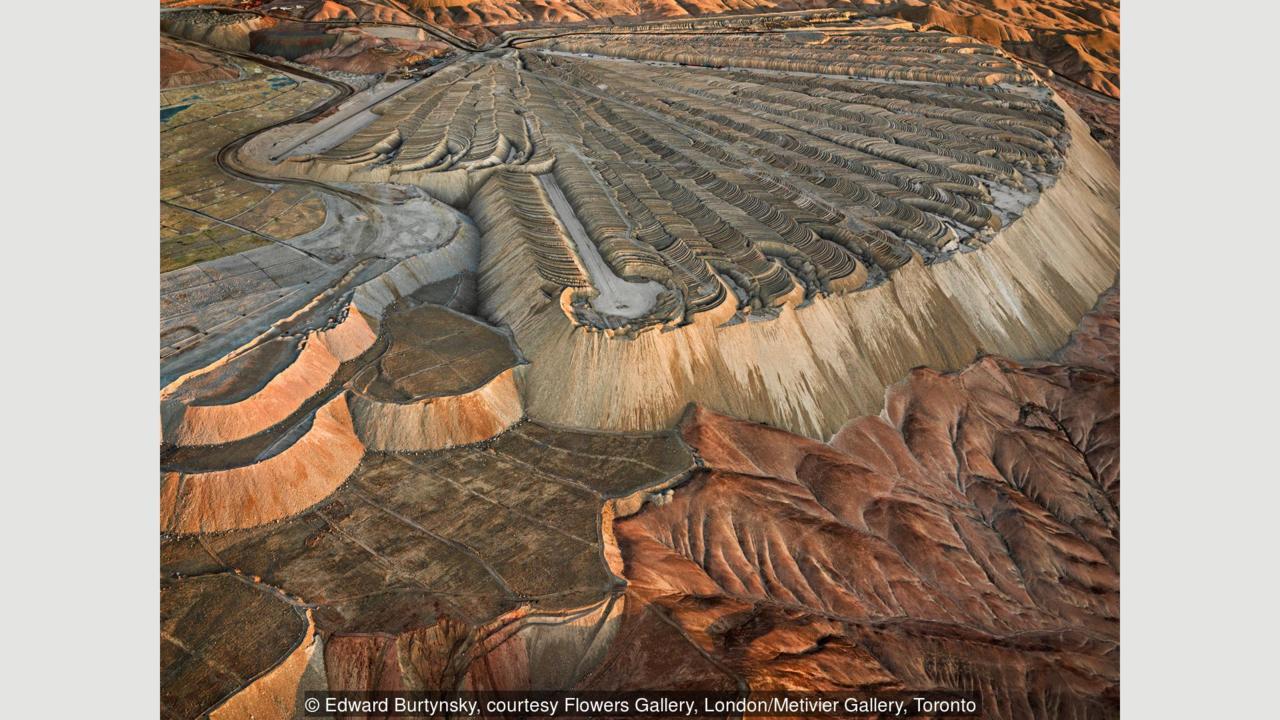
Chuquicamata Copper Mine Overburden #2, Calama, Chile, 2017 (Credit: Edward Burtynsky, courtesy Flowers Gallery, London/Metivier Gallery, Toronto)
Nobel Prize winner Paul Jozef Crutzen has popularised the idea of the Anthropocene, a geological age dominated by human activity. For a new multimedia Anthropocene project, Burtynsky visited 20 countries over five years. He argues that “we are on the cusp of becoming (if we are not already) the perpetrator of a… major extinction event”. This is made stark in the unnatural colour of a phosphor tailings pond in Florida: regions where phosphate – essential to industrial agriculture – is mined are typically unable to revert back to their natural state because of pollution. “Let me ask you a question,” asked Burtynsky in a 2016 Facebook post: “when was the last time you talked or heard or even thought about phosphorus?”

Phosphor Tailings Pond #4, near Lakeland, Florida, USA, 2012 (Credit: Edward Burtynsky, courtesy Flowers Gallery, London/Metivier Gallery, Toronto)
“Scientists do a pretty terrible job of telling stories, whereas artists have the ability to take the world and make it accessible for everyone,” argues Burtynsky. According to his new book Anthropocene, it is estimated that it currently takes 60 billion tonnes of material annually (biomass, fossil energy carriers, metal ores, industrial and construction minerals) to feed humanity’s global metabolism. Burtynsky’s images offer a disturbing insight into how we’re consuming the Earth at an alarming rate – as well as giving a sense of the scale at which we’re dumping it back out, in giant heaps, streams, and lagoons.
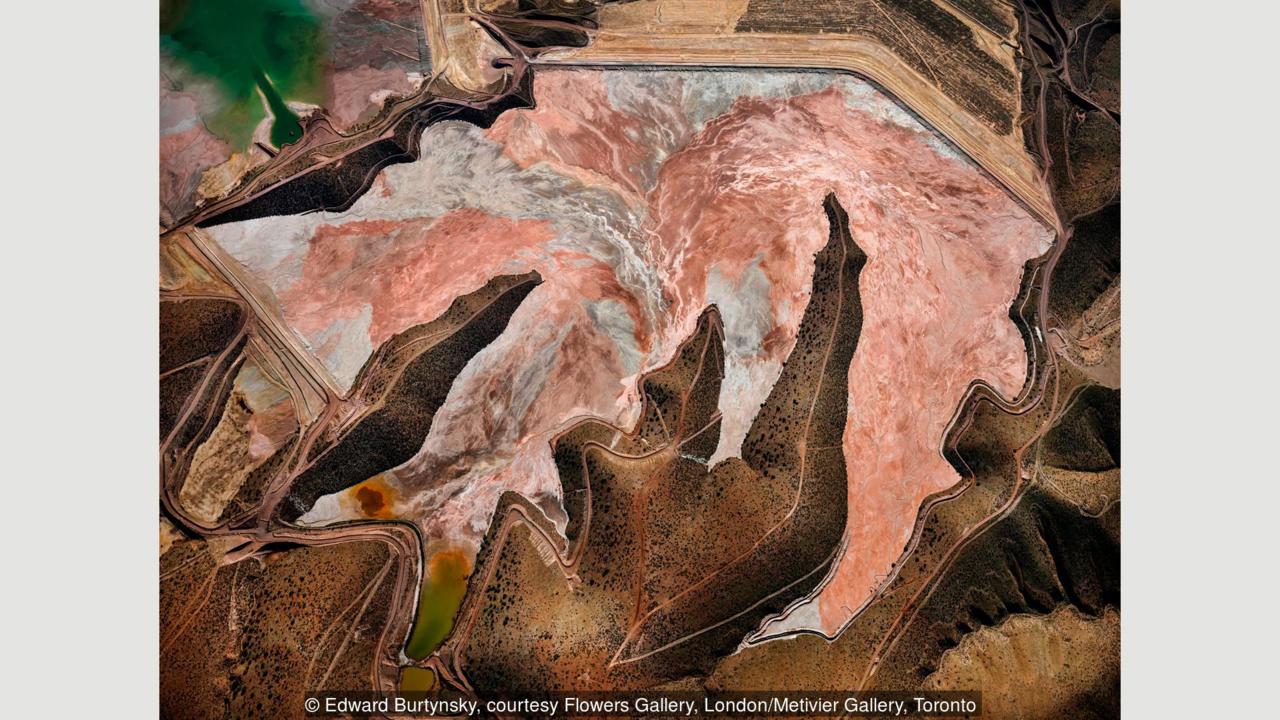
Morenci Mine #1, Clifton, Arizona, USA, 2012: primary copper producing region in the US (Credit: Edward Burtynsky, courtesy Flowers Gallery, London/Metivier Gallery, Toronto)
In images like that of the Morenci Mine – showing copper smelting in Arizona, with ponds holding liquid reserves of the effluents left by the extraction process – Burtynsky can tell stories that largely remain out of the mainstream, with an immediacy missing from lengthy articles. His aerial shots are graphic reminders of something that many choose to ignore. In Nigeria, poor communities have begun pirating crude oil from the pipelines through a process known as ‘bunkering’. Makeshift micro-refineries are set up to convert the crude into fuel. These systems leak volumes of crude and toxic by-products into the surrounding forests and waterways.

Oil Bunkering #1, Niger Delta, Nigeria, 2016 (Credit: Edward Burtynsky, courtesy Flowers Gallery, London/Metivier Gallery, Toronto)
Burtynsky categorises himself as an environmentalist, and has dedicated his life to bearing witness to “the indelible marks left by humankind on the geological face of our planet”. In other words, the increasingly ambitious scars and blemishes created by industry and large-scale human habitation, such as the vividly coloured layers from an ancient sea floor exposed by tunnelling machines 350m beneath Berezniki in Russia.
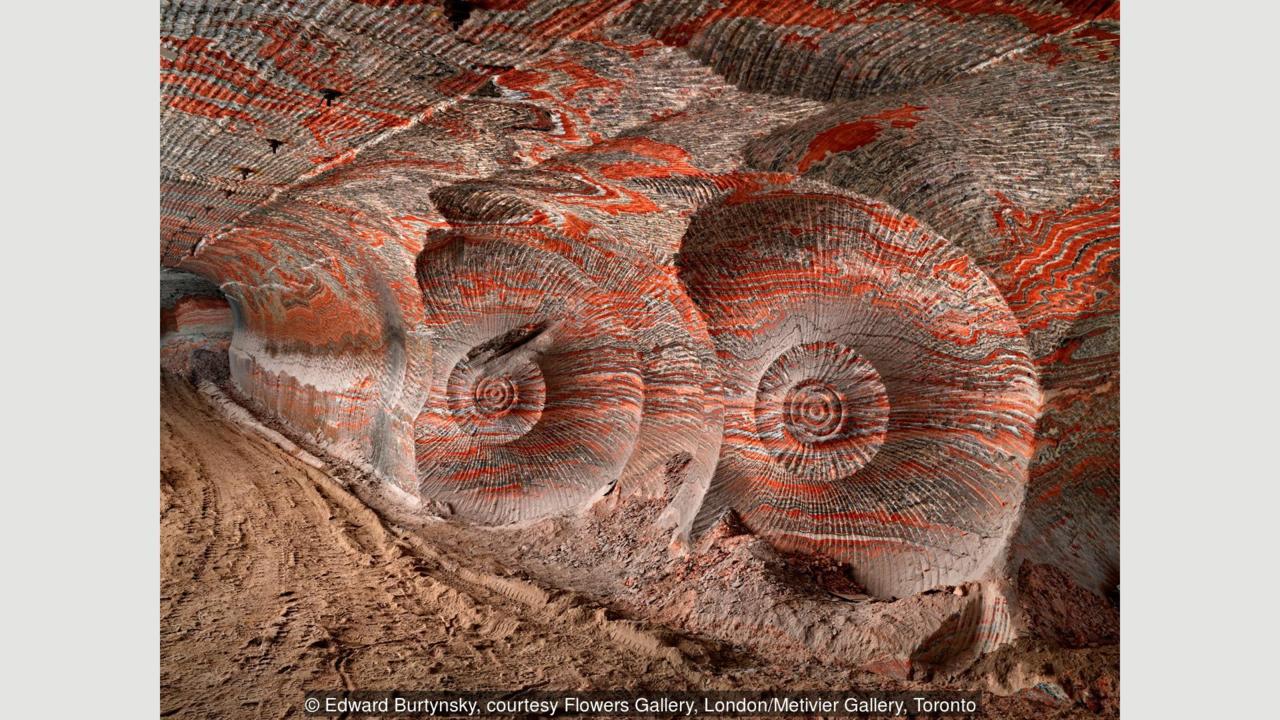
Uralkali Potash Mine #4, Berezniki, Russia, 2017 (Credit: Edward Burtynsky, courtesy Flowers Gallery, London/Metivier Gallery, Toronto)
Burtynsky explores how this is not just a recent development, either. The marble quarries in Carrara have been mined since the time of ancient Rome. This stone was famously used by Michelangelo, who would stay for three months at a time to supervise its removal. The ‘negative architecture’ formed on the land by the quarries is large enough to be seen from space.

Carrara Marble Quarries, Cava di Canalgrande #2, Carrara, Italy, 2016 (Credit: Edward Burtynsky, courtesy Flowers Gallery, London/Metivier Gallery, Toronto)
Burtynsky’s photos of sprawling wind farms and solar installations, on the other hand, document a shift towards sustainability. Equally, the enormous lithium mining and purification operation he captures in the Atacama desert in Chile, however virulent and lurid it appears, looks to a future in which cars powered by lithium batteries enable us to phase out fossil fuels.
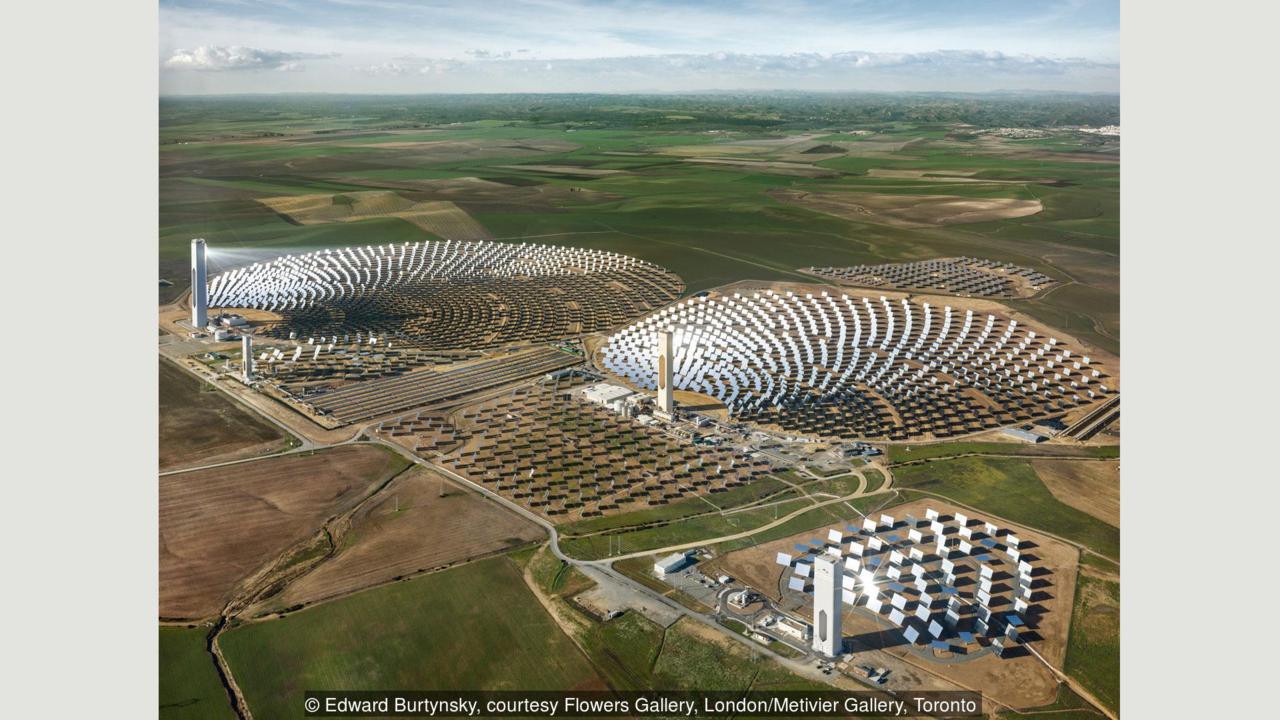
PS10 Solar Power Plant Seville, Spain, 2013 (Credit: Edward Burtynsky, courtesy Flowers Gallery, London/Metivier Gallery, Toronto)
Burtynsky also evidently cherishes the bits of Eden that survive. He has recently photographed tracts of virgin rainforest in British Columbia, Canada, and the pristine coral reefs in Indonesia. The coral wall in Pengah is a rare remnant of our globally diminishing coral reefs. Coral bleaching might be more likely to occur there (as elsewhere, such as on the Great Barrier Reef in 2016) should sea water temperatures begin to rise.
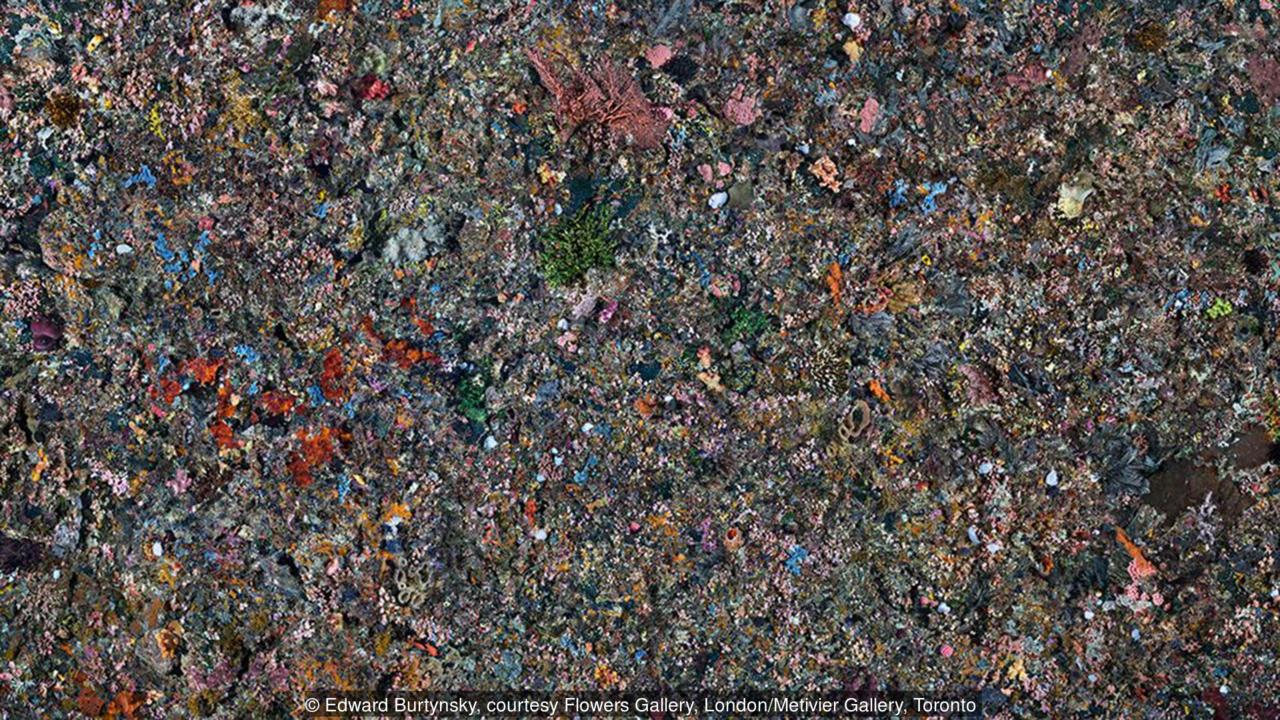
Pengah Wall #1, Komodo National Park, Indonesia, 2017 (Credit: Edward Burtynsky, courtesy Flowers Gallery, London/Metivier Gallery, Toronto)
Looking at those pictures makes the soul soar. But they are also a reminder that there is currently no ecology on Earth that isn’t in some way threatened.
Burtynsky’s show The Human Signature runs at Flowers Gallery in London from 17 October to 24 November 2018.
The exhibition Anthropocene, a multidisciplinary collaboration between Burtynsky, Jennifer Baichwal, and Nicholas de Pencier, runs until 24 February 2019 at the Art Gallery of Ontario and the National Gallery of Canada.
The book Anthropocene, which accompanies the exhibitions, is published by Steidl.
Source: BBC Culture
**UK24News**

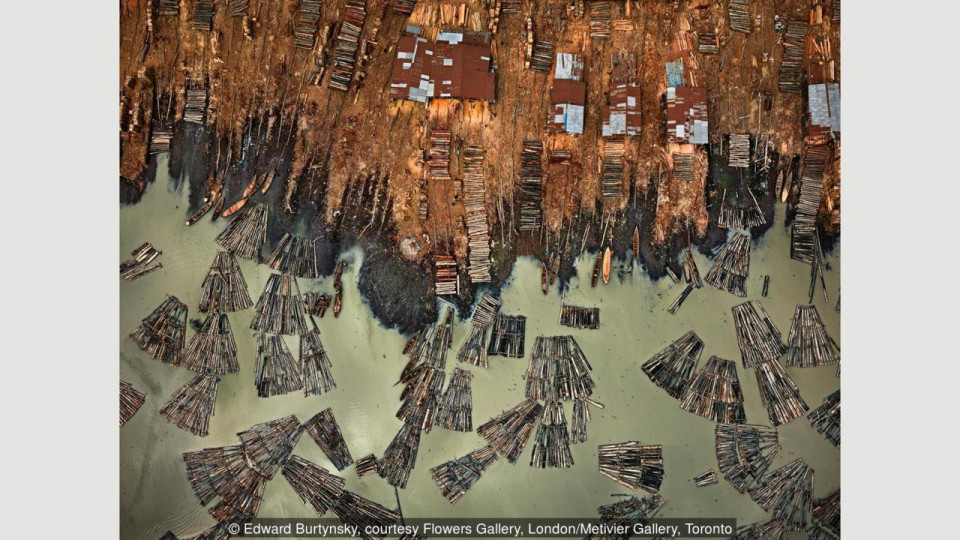
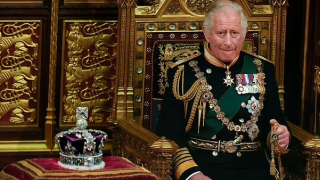
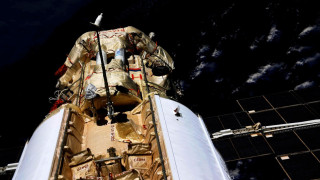

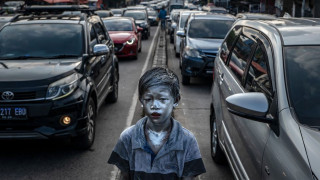


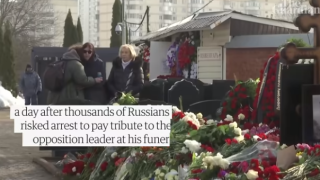
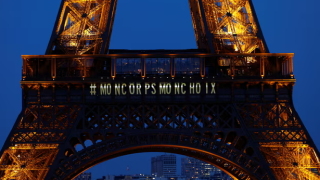
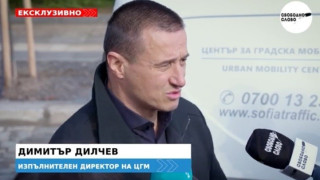
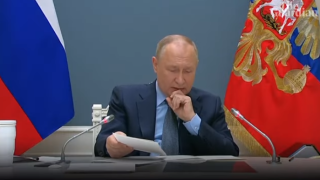
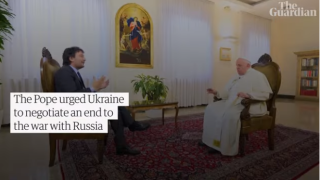

Leave a comment